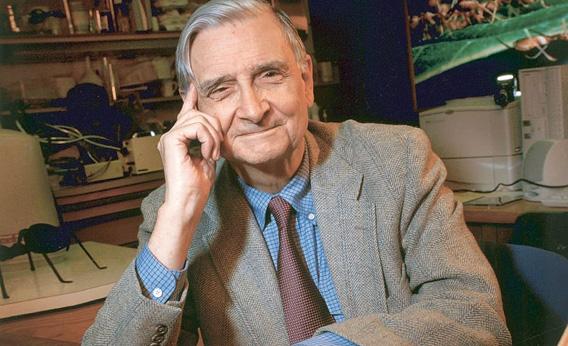 Emma Marris is a leader of the modernist environmental movement.
Emma Marris is a leader of the modernist environmental movement.Photo by Harley Soltes.
In 2005, two renegade greens tried to kill off environmentalism in broad daylight. The environmental movement, they said in a provocative essay, had grown stale and ineffectual. It was beholden to a wooly-headed, tree-hugging worldview that was as dated as lava lamps, bellbottoms and?Billy Jack. This save-the-Earth brand of environmentalism, which has long?idealized wilderness?(as?true nature) while simultaneously designating humanity as the?scourge of the planet, "must die so that something new can live," Ted Nordhaus and Michael Shellenberger wrote in "The Death of Environmentalism" (PDF).
Their critique landed like a thunderclap in green circles. Some environmentalists welcomed the jolt. But Sierra Club Executive President Carl Pope, channeling the reaction of many establishment green leaders,?was dismissive: "I am deeply disappointed and angered by it," he wrote in a long retort.
For a few moments, though, environmentalists debated the state of their planet-saving enterprise. But this was in the middle of the George W. Bush era, when the environment was widely considered?under assault. So green warriors soon returned to the trenches and focused on preventing the administration from rolling back existing environmental protections. They didn't have the time or luxury to reflect on their failings. The opportunity for a reimagined environmentalism seemed lost.
Or perhaps the seeds that?had been planted a decade earlier were just budding. Because today there is a growing reassessment under way in the environmental community.
Leading the charge is a varied group of what I call modernist greens (others refer to them as eco-pragmatists). They are people with deep green bona fides, such as the award-winning U.K. environmental writer?Mark Lynas, whose book?The God Species champions nuclear power and genetically modified crops as essential for a sustainable planet.
Another is Emma Marris, author of the critically acclaimed?Rambunctious Garden: Saving Nature in a Post-Wild World. She argues that ?we must temper our romantic notion of untrammeled wilderness? and embrace the jumbled bits and pieces of nature that are all around us?in our backyards, in city parks, and farms.
 Edward O. Wilson, an iconic eco-hero
Edward O. Wilson, an iconic eco-heroJim Harrison/Wikimedia Commons.
This broader ecological view rankles?traditional conservationists, who have long held that the best kind of nature is that which is protected and left to its own devices. At an Aspen Environmental Forum this summer, Marris annoyed eminent conservation biologist E.O. Wilson by talking about expanding our definition of nature, perhaps even to include invasive species. ?Where do you plant that white flag you?re carrying,? Wilson asked.
Wilson is an iconic eco-hero for his eloquent championing of biodiversity. As such, he symbolizes the long-dominant, nature-centric wing of environmentalism. Taking on icons (be it Mother Nature or one of her most celebrated defenders) is not an easy thing. But Marris and Lynas, among others, have helped usher in an ambitious re-examination of green orthodoxies; insurgent (even heretical) ideas are gaining currency in?books, at?conferences, on?blogs, inside?NGOs and?think tanks. There is?dare I suggest?a new and improved environmentalism in the making.
One of the other heavyweights in the conservation world,?Peter Kareiva, the Nature Conservancy's chief scientist, has recently?emerged?as a?blunt-talking?modernist green?an?environmentalist?who has made it his mission to loosen nature?s grip on the green movement.??
For example, earlier this year, he and a co-author?wrote?that "ecologists and conservationists have grossly overstated the fragility of nature, frequently arguing that once an ecosystem is altered, it is gone forever." This belief has flowed from the long-held notion (one that Marris has also forcefully challenged) of a pristine nature that exists apart from people.
But that is a false construct that?scientists?and?scholars?have been demolishing the past few decades. Besides, there's a growing scientific consensus that the contemporary human footprint?our cities, suburban sprawl, dams, agriculture, greenhouse gases, etc.?has so massively transformed the planet as to usher in a new geological epoch. It?s called the?Anthropocene.
Modernist greens don't dispute the?ecological tumult?associated with the Anthropocene. But this is the world as it is, they say, so we might as well reconcile the needs of people with the needs of nature. To this end, Kareiva?advises?conservationists to craft "a new vision of a planet in which nature?forests, wetlands, diverse species, and other ancient ecosystems?exists amid a wide variety of modern, human landscapes."
This shift in thinking is already under way. For example, ecologists increasingly?appreciate?(and study) the diversity of species and importance of ecosystem services in cities, giving rise to the discipline of?urban ecology. That was unthinkable at the dawn of the modern environmental movement 50 years ago, when greens loathed cities as the antithesis of wilderness.
Like Emily Yoffe's Dear Prudence Column on Facebook:
Source: http://feeds.slate.com/click.phdo?i=fcf948a6322d3a1a6d3969783abf4c4d
occupy congress juan williams victor martinez alcatraz cruise ship martin luther king jr. zappos
No comments:
Post a Comment